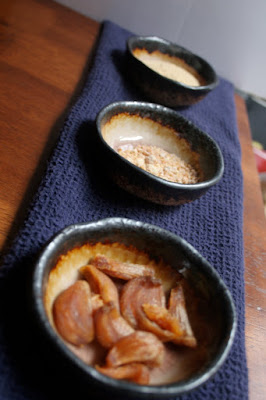Circulator Vs. Water Bath: Fight!
So, there are a lot of distinctions between different approaches to sous vide cooking appliances. One difference between the immersion circulators and water baths (including classic PID controllers) is the ability to move the water around. This helps keep the temperature of the water regulated more precisely. Think of it like a bath. You fill your bathtub up with hot water, then you get into the tub. After some time, the water gets cold and you turn on the hot water tap. The whole bath tub doesn't immediately get warmer, just the water near the heat source. Usually, I start moving my hand around to equalize the temperature.
The fine folks at PolyScience did some testing to see what the actual impact of this was on food being prepared. Their tests show that as water baths adjust to the introduction of cold product (e.g. refrigerated chicken breasts), they actually will raise the temperature of the water above the target setting. My understanding of the experiment is that they put twelve chicken breasts in each 16L bath. This resulted in the core temperature of the chicken to go 4 degrees over the desired temperature (about 2.5% over). Another interesting tidbit was that the location of the product inside of the water bath (in the center vs. near the walls) also impacted cooking time and temperature.
What Does This Really Mean
This test is incredibly important if you are in a professional environment, where precision is critical and you are dealing with a lot of chilled product. If I were in a professional kitchen I would definitely be looking to use an immersion circulator, for the reasons they mention in the blog post.
For the consumer sous-vide market, it is less important. Their experiment involved adding a tremendous amount of chilled product compared to what you are likely to be doing at home, and you also might not care as much about the temperature deviation. That being said, I would refer you to Jean-Francois' post on this subject. He sums up Douglas Baldwin's and Frank Hsu's advice on food safety, which is important. He also noticed that PolyScience tagged their post with 'Sous Vide Supreme', which could be an indicator that this is counter-marketing against the SVS. Great catch :)
Post Video Watchin'
There is actually a video of the experiment that I just watched:
Crap, they use the same analogy I used with the bathtub. Also, I think the video was just a recreation of the actual experiment, as the temperature on the PolyScience immersion circulator didn't get back up to 160 degrees, which is the temperature they said in the chart they were testing.
The fine folks at PolyScience did some testing to see what the actual impact of this was on food being prepared. Their tests show that as water baths adjust to the introduction of cold product (e.g. refrigerated chicken breasts), they actually will raise the temperature of the water above the target setting. My understanding of the experiment is that they put twelve chicken breasts in each 16L bath. This resulted in the core temperature of the chicken to go 4 degrees over the desired temperature (about 2.5% over). Another interesting tidbit was that the location of the product inside of the water bath (in the center vs. near the walls) also impacted cooking time and temperature.
What Does This Really Mean
This test is incredibly important if you are in a professional environment, where precision is critical and you are dealing with a lot of chilled product. If I were in a professional kitchen I would definitely be looking to use an immersion circulator, for the reasons they mention in the blog post.
For the consumer sous-vide market, it is less important. Their experiment involved adding a tremendous amount of chilled product compared to what you are likely to be doing at home, and you also might not care as much about the temperature deviation. That being said, I would refer you to Jean-Francois' post on this subject. He sums up Douglas Baldwin's and Frank Hsu's advice on food safety, which is important. He also noticed that PolyScience tagged their post with 'Sous Vide Supreme', which could be an indicator that this is counter-marketing against the SVS. Great catch :)
Post Video Watchin'
There is actually a video of the experiment that I just watched:
Crap, they use the same analogy I used with the bathtub. Also, I think the video was just a recreation of the actual experiment, as the temperature on the PolyScience immersion circulator didn't get back up to 160 degrees, which is the temperature they said in the chart they were testing.



Comments
Post a Comment